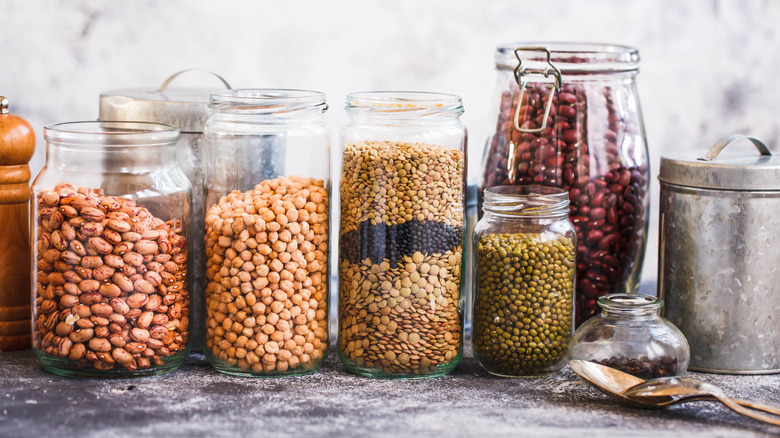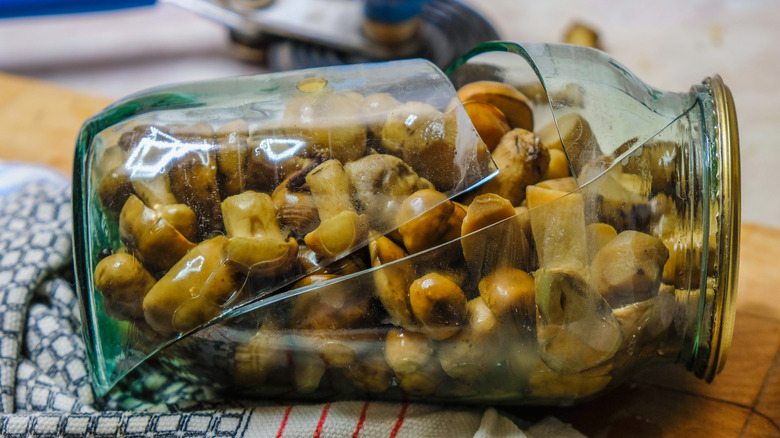The Reason Dry Heat Is Detrimental When Canning
Of all the various types of food preservation, canning has to be the one with the broadest appeal. There are three main methods of canning that research and experience have shown to be the safest and most effective. There's the hot water bath, the atmospheric steamer, and the pressure canner. They all use moist heat to get a proper seal on the canning jar. There is, however, a fourth type of canning known as dry canning that, while simple in theory, is actually detrimental.
Dry canning is a method by which low-moisture foods like legumes, pasta, and rice are preserved in jars by using the dry heat of an oven. The filled jars are heated in the oven for a period of time before clean lids go on. The heat is meant to form a seal between the lid and jar, preventing any contaminants from getting inside.
Though the method seems sound enough, there are certain drawbacks. Chief among these is the fact that canning jars are simply not designed to withstand dry heat. The heat can cause hairline fractures in the glass. With repeated use, those fractures will grow larger and eventually cause the jar to break. This is far from the only detriment, however. Even though it might sound counterintuitive, dry heat can actually introduce unwanted moisture into the canning environment, too.
Moisture and mold problems
Though all food contains water, dry goods like flour or pasta have far less than, say, tomatoes. But, moisture is present nonetheless. The irony is that the heat from dry canning activates the moisture and draws it out from within the food. The hope is that all of the moisture will evaporate. However, any moisture that doesn't fully evaporate will leave behind small, moist cavities in which bacteria can thrive once the jar is sealed. And, the last thing you want in canned goods is bacteria, as it can lead to serious health and food safety concerns.
The heat also plays a role in shortening the food's shelf life, which is the exact the opposite of what canning is meant to do. The dry heat messes with the proteins and fats in the food by increasing their temperature past the point where they're safe and stable. The more you heat and cool food, the more the protein and fat temperatures change, and the faster the food will go bad if not consumed within a short period. You could end up wasting more food than you save in the long run.
Better methods to achieve the same goal as dry canning include vacuum sealing, freeze drying, or using an oxygen absorber. These methods are more expensive than dry canning but, when it comes to food safety, you're better off spending a little extra than having to worry about bacteria and mold.

